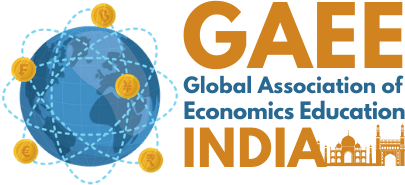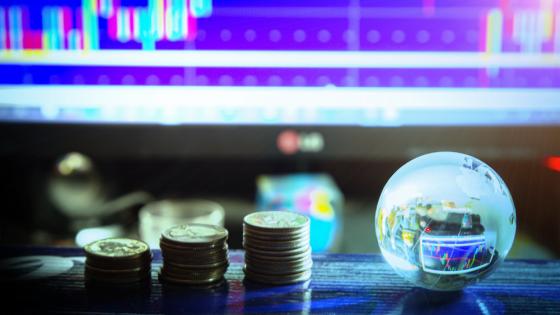Introduction
Former general secretary of the UN quotes “climate change is the single greatest threat to a sustainable future but, at the same time, addressing the climate challenge presents a golden opportunity to promote prosperity, security and a brighter future for all.”
Economics of climate change is the study of the economic costs and benefits of climate change and it’s impacts, while focusing on limiting its effects on growth and development. This study has become all the more important as the global temperature has risen at an unprecedented pace in this decade, leading to an increased risk of high-pace global warming, owing to high concentration of greenhouse gases which was not as prevalent in the past eight hundred years. The changes in the climatic conditions lead to irreversible consequences in the form of heat waves, increased oceanic pressure, epidemics, droughts and many more, which hinders the growth of an economy by putting pressure on already limited resources. Major developing countries, presently experiencing industrialisation, emit soaring levels of carbon dioxide and other harmful gases in the environment, likewise developed countries did during their industrialisation phase. These adverse environmental conditions affect the basic elements of life for people around the world in the form of clean water accessibility, healthy living conditions, food production and others due to which hundreds of millions of people suffer from hunger, water shortage and coastal flooding as the world warms.
Ringing the bell to save Economies in the Long Run
Climate change has very serious impact on growth and development, and it has been estimated that if actions are not taken, the concentration of greenhouse gases will reach to double its pre-industrial level as early as 2035, indicating that the average global temperature will by over 2 degree celsius, acting as the biggest threat to the world’s economy. The poorest countries or LDCs (least developed countries) are most vulnerable to climate change Although it is not possible to control the climatic conditions for the next two to three decades, it is equally possible to protect the economies in the long run if the actions for sustainable growth and development are taken at the earliest.
As witnessed by the United Nations Framework Convention on Climate Change (UNFCCC), the Kyoto
Protocol, and the Paris Agreement, the world has indeed taken actions on paper but there are existing inter-linked consequences to a worsening climate for instance, the risk to the financial sector and its stability.
The Risky Relationship
There exists a strong relation between climate risk, financial risk and risk to economic activity. Climate change poses the long term risk to the global economy in the form of transition risk and physical risk. Now, the climate risk is a systemic risk that has implicit and explicit effects on the economy and the people in the financial sector and needs to be addressed at a global level so that the measures can be taken to limit its impact by agreeing to the various climate and environmental agreements. Further, climate change causes financial instability as it leads to a change in the value of financial assets, increases the cost and availability of liquidity or credit and increases operational losses. This risk leads to an increase in the cost of production and hampers the productivity of the human capital, leading to change in the employment division.
Risk has Types
Transition risk refers to the risk that arises from policy measures of the government like putting restrictions on the carbon emission that leads to a shift to a low-carbon economy, whereas physical risk refers to risk to the financial assets and liabilities due to worsening climatic conditions like droughts, floods etc, which causes massive risk to the financial institutions. It has been studied that economic output will be affected by efforts to transition towards net-zero emission. Result of the analysis conducted by a group has shown that stricter environmental policies are consistent with meeting the goals of the Paris Agreement that it will exert a 5% to 8% drag on global GDP by 2050. Avoiding or delaying these transition risks to a greener economy would lead to increase in the physical risk and this in turn would increase the requirement of more resources for reconstruction of the supply chain, to combat the reduced investment for increasing the future growth that has been affected by the climate change.
As climate risk leads to physical risk in the form of decreased value of the assets, it reduces the capacity to repay the loans mounting to increased risk of default and losses on their credit portfolios which is financial risk to the economy. Climate change does not pose any additional risk in the financial institutions but adds to the existing market risk, operational risk, credit risk and liquidity risk.
Ways to mitigate risk
Avoiding the risk of climate change completely is impossible, but the climate risk effect can be lessened by taking measures like disclosure of firm’s carbon emission and exposure to climate risk, measuring carbon footprint and social cost of carbon for all firms, engaging investors in corporate activism and bringing together public and private sectors to accelerate the transition to net zero. Investment in less carbon production and in green bonds is a smooth way to withstand climate risk but it is hard to apply to the real world as it brings associated risk which needs to be analysed in order to proceed ahead without taking a step back.
Conclusion
Climate change is one of the biggest challenges that mankind is trapped in, it leads to shocks and vulnerabilities to economic growth and development. We conclude that due to the interaction between physical and transition risks, climate change has affected the financial system of an economy and leads to financial instability among the consumers. Earth is the responsibility of all the countries whether they are rich or poor and this should not cap the aspirations for the growth of LDCs especially. The way to a climate risk free economy brings with it many challenges and associated risk but can be brought about by taking quick actions through a sustainable plan of strategies and well researched, highly responsive measures.
References
- Stern, N. (2005). the Price of Change.
- Fabris, N. (2020). Financial Stability and Climate Change. Journal of Central Banking Theory and Practice. https://doi.org/10.2478/jcbtp-2020-0034
- Brunetti, C. (2021, March 19). Climate change and financial stability. https://www.federalreserve.gov/econres/notes/feds-notes/climate-change-and-financial-stability-20210319.html?utm_campaign=ms&utm_medium=newsletter&utm_source=morning_brew
- The economics of climate change. https://institutional.vanguard.com/insights-and-research/report/the-economics-of-climate-change.html
- The implications of climate change for financial stability. Financial Stability Board. https://www.fsb.org/2020/11/the-implications-of-climate-change-for-financial-stability/
- Liu, Z., Sun, H., & Song-Lin, T. (2021). Assessing the impacts of climate change to financial stability: evidence from China. International Journal of Climate Change Strategies and Management, 13(3), 375–393. https://doi.org/10.1108/ijccsm-10-2020-0108
AUTHOR:
Mahima Agrawal
[email protected]
B.A. (H) Economics 3rd Year,
Gargi College, University Of Delhi


Recent Comments